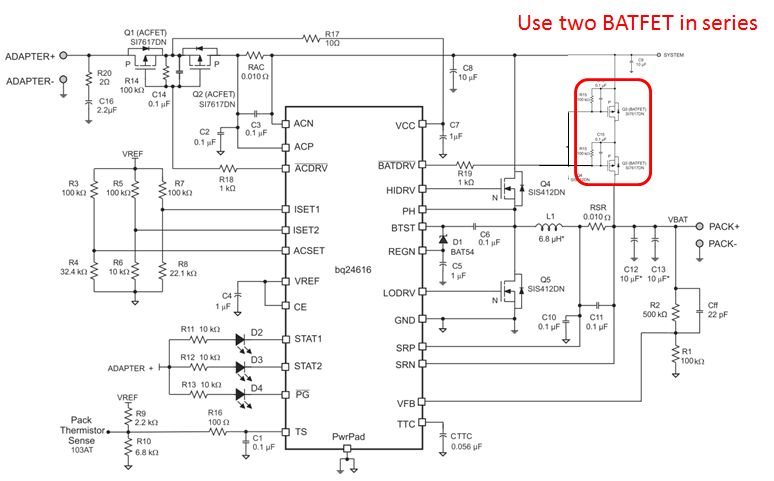Hi,
My customer plan to use two BATFET in parallel to reduce IR loss in BATFET. Then we need to know the drive capability of BATDRV driver to judge how many FETs can be driven. Can you provide any information about BATDRV driver?
Best Regards,
Sonoki / Japan Disty


